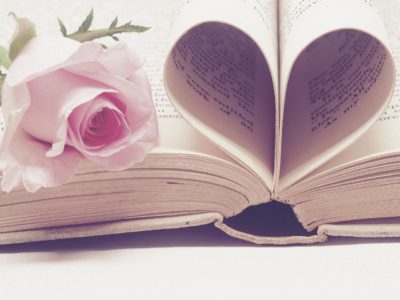
Valentine’s Day has come and gone, its annual rites pointing us to the coming Spring, that glorious season when birds sing and bees hum, amorous glances are exchanged, and love and romance lilt delicately in the air.
Wait a second. Let’s think about the word “romance.” As analytical writers consumed with the meanings of words, why do we call things about love romantic?
Like most good stories, it’s an unusual, twisty tale.
The secret is in the root of the word. Romance is built upon Rome and all things Roman. All roads lead to Rome, don’t they?
As Rome organized and built its early sturdy institutions, it felt the need to expand beyond its little neighborhood in Italy. Soon the whole peninsula became part of the fledgling empire. And then much of the Western world. The empire stretched to the English Islands, Eastern Europe, the Middle East, Africa, and into Asia Minor.
Empire, unfortunately, comes with a thousand ministerial headaches. Rome found itself trying to govern myriad cultures with wildly differing native languages. In typical imperial overreach, Rome told the peoples of these newly occupied lands, “We’re the bosses now. We make the rules. And we insist that Latin be the language of the society.”
But Latin defies an easy pickup, with its difficulties of grammar. Locals clung to their native languages while bringing in much of the vocabulary of Latin. What arose in some places were hybrid languages. These collectively came to be known as Vulgar Latin. Not because of crudity or naughty words, but because the Latin word vulgaris referred to the common people.
Today, five languages make up what we call the “Romance languages,” the ones most heavily steeped in Latin. Italian is the most obvious, but recall that Rome was just a small chunk of Italy when it first aspired to empire; other regions of Italy had their own distinct languages. The other Romance languages are French, Spanish, Portuguese, and Romanian. The latter, Romanian, even announces its Roman roots with the very name.
Around the year 1300 or so, “romance” came to refer to tales of chivalrous knights errant, many of them involved with maidens fair, often with timeless love affairs sparking between them. Now we begin to see the connection to the modern definition of romance. Hearts aflutter, and all that.
With the Norman conquest of England in 1066, French, laced with Latin and blended with Norse—because they were Normans–merged with Anglo-Saxon to lay the foundation of modern English. In short order, it was all but unrecognizable from the Old English of Beowulf.
By the end of the 18th century, in a rebuke of the rational ideals of the Enlightenment, Romanticism, as an artistic and philosophical movement, became the thing, harkening back to the heightened emotions stirred by tales of the medieval era. The term and movement embraced emotion but didn’t directly have much to do love, although pioneers of romantic love stories, like Jane Austen, fell under the umbrella of Romanticism. Remarkably, although novels built on love stories have been with us for a couple of centuries, romance as a specific genre wasn’t really recognized until the 1950s.
Thus concludes our romantic history lesson. So buy the flowers and chocolates, brush up on sweet nothings to whisper, become a hopeless romantic, and do so in the confident knowledge of the etymology of “romance.” This does not excuse binge-watching Lifetime movies, though. Just sayin.’
For a musical parting gift of true love, enjoy this selection from A Hard Day’s Night.
https://www.youtube.com/watch?v=k-NlEKLpR5o

Elle Andrews Patt
“… blended with Norse—because they were Normans– …” made me laugh out loud. You soooo need to teach history. This is the kind of comment that connects disparate pieces in a way that so many teachers miss doing. I enjoyed this trek into the origins of the term “romance.” I’ve only just discovered that “mystery romance” is a thing and my latest book falls into it, so I’m bent on learning more about the ins and outs of romance and romantic thinking right now 🙂
Ken Pelham
Thank you, Elle!
I do love history and researching into history for my little writing projects. Such a fascinating thing, this human species, in all its shapes and sizes and infinite detail.
I’ll have to google “mystery romance” as a genre to see what distinguishes it. Is it a subset of mystery or a subset of romance? I could see a clear bent to it depending on that.
David Edmonds
Ken, sincerely enjoyed your informative article. I love the study of language development and how the Battle of Hastings 1066 enriched the English we speak today. You might also want to include Catalan as one of the romance languages. It’s obviously not as widespread as the others, but don’t tell that to a citizen of Barcelona. ?
Ken Pelham
Ah, good point, David! There are a number of languages under the umbrella of Romance Languages. The five I listed are considered the major Romance languages. About 3% of Romance speakers come from others, including Catalan. Thank you for pointing that out.
English is not one of the Romance languages but we draw a pretty substantial vocab from the Latin.
BJ Phillips
Interesting article! My dad insisted that I take at least one year of Latin in high school, and I am grateful to him for that. One can guess at the meaning of unknown English words from their Latin roots. It saved my butt on several tests later on. While taking Latin, we used to joke that the syntax was so convoluted that it was no wonder it was a “dead” language, used only in high church. Still, it’s fascinating to see how it all happened. Thanks.
Ken Pelham
Thanks, B.J.!
I confess, I’ve never studied Latin. But the changes in languages and the origins of words is endlessly fascinating to me.